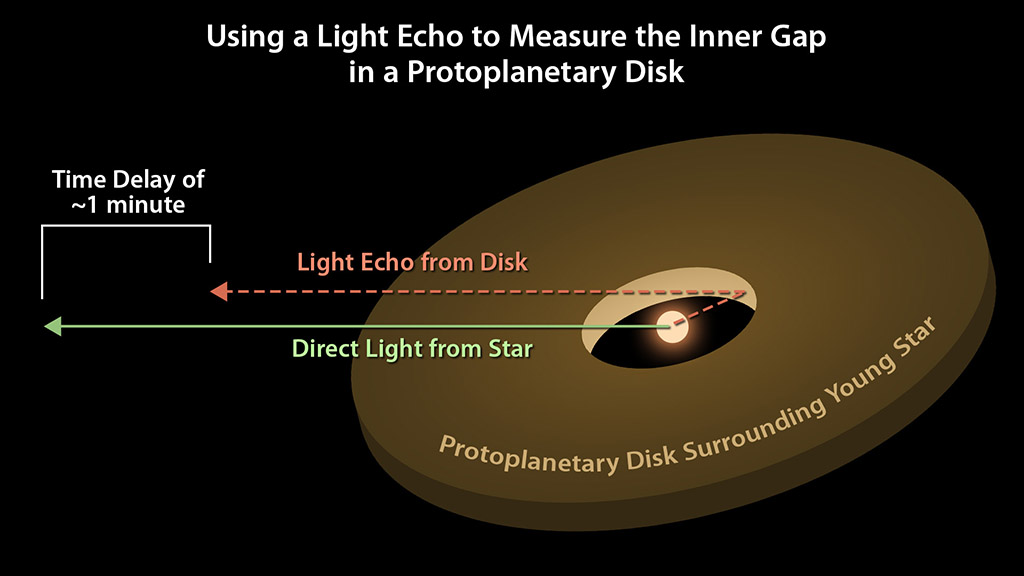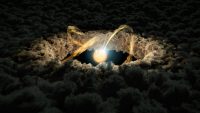Astronomers can use light echoes to measure the distance from a star to its surrounding protoplanetary disk. This diagram illustrates how the time delay of the light echo is proportional to the distance between the star and the inner edge of the disk. (NASA/JPL-Caltech)
Home Astronomers can use light echoes to measure the distance from a star to its surrounding protoplanetary disk. This diagram illustrates how the time delay of the light echo is proportional to the distance between the star and the inner edge of the disk. (NASA/JPL-Caltech) Astronomers can use light echoes to measure the distance from a star to its surrounding protoplanetary disk. This diagram illustrates how the time delay of the light echo is proportional to the distance between the star and the inner edge of the disk. (NASA/JPL-Caltech)



